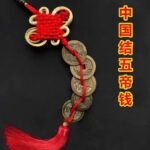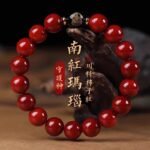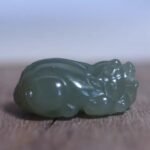By My Story of Orient
“Gold has a price, jade is priceless.” — Ancient Chinese Proverb
Introduction: Jade, the Silent Treasure
In a world chasing gold, stocks, and NFTs, there’s one ancient treasure quietly gaining value across continents — jade. For over 8,000 years, jade has been revered in Chinese culture not just as a gemstone, but as a symbol of virtue, health, and power.
But in 2025, is investing in jade still a wise move? And what makes Russian Hetian jade (especially green nephrite) a rising star in the global market?
Let’s dive into the spiritual and financial depths of jade investing — guided by both market data and the timeless wisdom of the Tao.
1. Why Is Jade Valuable? (It’s More Than a Pretty Stone)
While most gems are valued for clarity and sparkle, jade’s beauty lies in its softness, density, and energy.
In Chinese culture, jade embodies the “Five Virtues” — benevolence, righteousness, wisdom, courage, and integrity. Unlike diamonds, jade is not just worn. It is carried, passed down, even meditated with.
In Taoism, jade is believed to absorb and harmonize qi (life energy). This metaphysical value gives jade a role in spiritual longevity, not just luxury fashion.
Financially, jade is rare. Truly high-quality nephrite (especially Russian and old Xinjiang deposits) is depleting — while demand is rising globally due to cultural exports and the wellness movement.
2. What Makes Russian Hetian Jade a Smart Investment?
Among all jade types, Russian green nephrite — often called “Siberian Hetian jade” — stands out for several reasons:
| Feature | Why It Matters |
|---|---|
| Color | Rich emerald to spinach green, deep and even |
| Texture | Fine, waxy, oily lustre — very close to mutton-fat jade |
| Hardness & Density | Stronger than many Chinese deposits |
| Availability | Becoming rarer due to over-mining and export controls |
While Myanmar jadeite gets headlines, collectors increasingly see Russian nephrite as a more stable, spiritual, and authentic choice.
You can explore our Russian Hetian Jade Collection to see how quality varies by polish, color, and origin.
3. How Has Jade Performed as an Investment?
Jade’s price doesn’t fluctuate like crypto — and that’s the point.
| Year | High-Grade Nephrite Price (per kg) |
|---|---|
| 2015 | ~$1,000–3,000 USD |
| 2020 | ~$3,000–8,000 USD |
| 2024 | ~$5,000–12,000+ USD |
Rare collector pieces (especially old Russian or white mutton-fat jade) can go for six figures at auction. And unlike precious metals, jade combines cultural appreciation with heirloom potential.
4. How to Avoid Overpaying or Buying Fakes
Not all jade is created equal — and sadly, not all jade is even jade.
Here’s how to protect your investment:
- ✅ Buy only certified nephrite or jadeite with lab verification
- ✅ Ask about the origin (Russian jade has specific geological markers)
- ✅ Beware of “B jade” (chemically treated) or dyed glass imitations
- ✅ Learn to feel the stone’s weight and temperature (real jade is cold and heavy)
Tip: At My Story of Orient, we guarantee authenticity backed by expert sourcing. Learn more in our Jade Knowledge Base.
5. Jade as a Legacy: Not Just for Investors
In Taoism, wealth is not just accumulation — it’s balance.
Owning jade brings more than profit. It offers spiritual grounding, family continuity, and daily beauty.
Whether you’re a first-time buyer or a seasoned collector, jade is one of the few assets that bridges material value and metaphysical meaning.
Conclusion: Should You Invest in Jade in 2025?
If you’re looking for:
- ✅ Long-term, stable value
- ✅ Tangible assets you can wear and pass down
- ✅ A connection to ancient wisdom and cultural beauty
- ✅ An alternative to volatile stocks or crypto…
Then yes, jade is not just a good investment — it’s a meaningful one.
🔗 Explore Our Exclusive Jade Pieces
Start your collection with confidence:
👉 Shop Authentic Russian Hetian Jade Now
🧭 Want help choosing the right piece? Contact us for a free consultation



